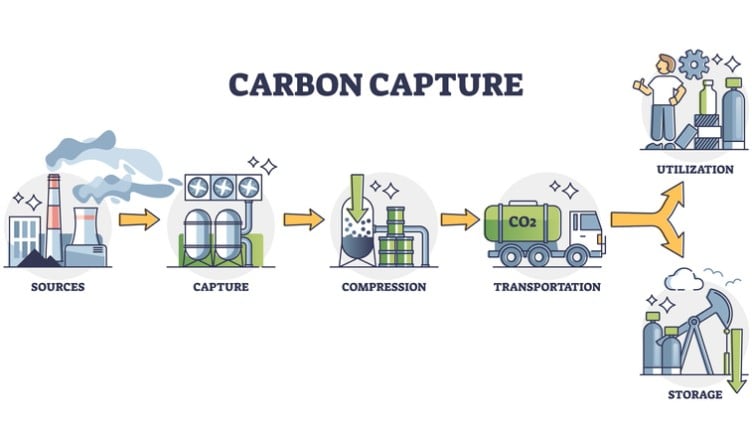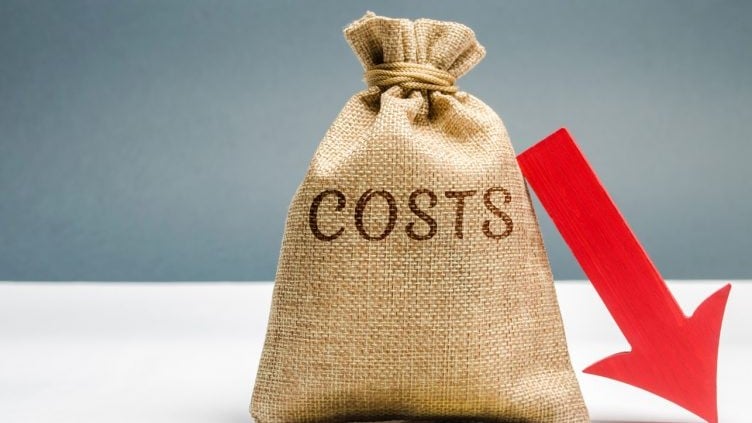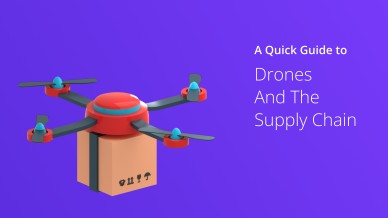The global climate is quickly shifting, and the dangers of climate change impact are becoming more apparent. While many people are looking to governments to take the lead on this issue, businesses also have a responsibility to do their part in mitigating climate change. One way that companies can reduce their carbon emissions is by investing in carbon capture technology.
But is this technology worth the investment? This blog post will explore the benefits and drawbacks of carbon capture and discuss how businesses can offset their carbon emissions.
Table of Contents
What is Carbon Capture, and Why is It Important?
Carbon capture is the process of taking waste CO2 from large point sources like fossil fuel power plants and keeping it permanently so that it does not enter the atmosphere.
Carbon capture and storage (CCS) technologies are critical for reducing greenhouse gas emissions from these facilities. By capturing and storing CO2, we can prevent it from being released into the atmosphere, contributing to climate change. Other industrial processes reduce emissions using CCS, such as cement production and steelmaking.
In addition, CCS also enhances oil recovery: CO2 can be injected into depleted oil reservoirs to help extract the remaining oil. This process reduces emissions and helps to increase our energy security. As we work to address climate change, carbon capture and storage will play an essential role in helping us achieve our goals.

How Does Carbon Capture Work?
Carbon capture captures atmospheric carbon dioxide (CO2) and stores it in a solid, liquid, or gaseous form. The process aims to prevent CO2 emissions from power plants and other industrial facilities from entering the atmosphere. There are three primary carbon capture methods:
Pre-Combustion Carbon Capture
Pre-combustion carbon capture is a technology that captures carbon dioxide (CO2) from fossil fuels before combustion. The CO2 is stored or used in other processes, such as enhanced oil recovery.
This operation captures the CO2 before the power plant emits it or from the flue gas after combustion. Many methods exist for pre-combustion carbon capture, including chemical absorption, membrane separation, and Cryogenic separation.
Pre-combustion carbon capture applies to many fossil fuels, including coal, natural gas, and oil shale. Pre-combustion carbon capture can achieve up to 90% CO2 removal efficiency when used with power generation.
One example of pre-combustion carbon capture is gasification, which involves exposing a carbon-based fuel to high temperatures and pressures in the presence of oxygen.
The process of gasification forms syngas, a mixture of hydrogen and carbon monoxide. Syngas is helpful in various ways, including the generation of electricity or the production of transportation fuels.
Gasification is compatible with many feedstocks, including coal, biomass, and waste materials. In addition, gasification can be combined with other carbon capture technologies, such as sequestration, to reduce emissions further.
The main advantages of pre-combustion carbon capture over other technologies are its high efficiency and the fact that it can be retrofitted to existing power plants.
Additionally, pre-combustion carbon capture does not require expensive noble metals or chemicals, making it more cost-effective than other technologies.
Post-Combustion Carbon Capture
Post-combustion carbon capture (PCC) captures carbon dioxide (CO2) emissions from power plants. The CO2 is captured after combustion when the flue gas contains a high greenhouse gas concentration. PCC can be used to capture CO2 from both fossil fuel-fired power plants and biomass-fired power plants.
There are two main types of PCC. Solvent-based PCC uses a chemical solvent to absorb CO2, while solid sorbent-based PCC absorbs CO2 without forming chemical bonds. Both have been used commercially at coal-fired power plants.
One example of post-combustion carbon capture is the process of dissolved carbon capture (DCC). This process scrubs carbon dioxide from exhaust gases after combustion, using a solvent to absorb the carbon dioxide.
The concentrated carbon dioxide is then pressurized and transported for storage or use in other applications. DCC is a well-established technology used for decades in natural gas processing and, more recently, for power generation.
While DCC is effective, it requires significant energy to operate, which can offset some of the emissions reductions achieved by capturing and storing carbon dioxide. As a result, DCC is typically only used when financial incentives exist, such as regulations or carbon taxes.
Oxy-Combustion Carbon Capture
Oxy-combustion carbon capture occurs when fossil fuels are burned using pure oxygen rather than air, resulting in a concentrated and easily capturable CO2 stream. This technology has the potential to significantly reduce greenhouse gas emissions from coal-fired power plants, as well as other industrial sources. In addition, oxy-combustion can be implemented with existing coal-fired power plants, making it a relatively low-cost option for reducing emissions.
Oxy-combustion has several advantages over other carbon capture methods. First, it is more efficient than traditional carbon capture methods, meaning less energy is required to capture the same amount of CO2. Additionally, it can be retrofitted to existing coal-fired power plants, allowing them to continue operating while reducing their emissions.
However, oxy-combustion carbon capture is not without its challenges. The most significant challenge is the cost of pure oxygen, which can be up to three times as expensive as air. As a result, oxy-combustion carbon capture is only economically viable if carbon costs are high enough to offset oxygen.
The Drawbacks of Carbon Capture
While carbon capture and storage is a practical and potentially viable solution for fighting climate change, there are several drawbacks to carbon capture to consider:
Carbon capture is expensive.
First, the process is expensive and requires significant energy, meaning it is not currently economical on a large scale.
The cost of carbon capture typically includes the cost of capture, transport, and storage. For example, one estimate puts the cost of capturing and storing carbon dioxide at $600 per ton.
The costs can be even higher when scaled up to an industrial level. As a result, many experts believe that carbon capture will only be viable with government subsidies or carbon taxes.
Carbon capture misses the main point of climate change awareness.
Carbon capture does not address the root cause of climate change: the overuse of fossil fuels. As a result, carbon capture must work with other solutions, such as renewable energy, to be effective.
Thus, critics argue that carbon capture is simply a stopgap that will only delay the inevitable. Additionally, some experts have raised concerns about leakage from carbon storage reservoirs. If even a fraction of the stored carbon dioxide were to escape, it could negate the positive effects of carbon capture.
CCS is not energy-efficient.
One key issue is that CCS is energy-intensive because of direct air capture (DAC) thermal energy requirements. In many cases, it requires nearly as much energy as the fossil fuels produced in the first place, suggests a recent analysis.
This electricity can come from renewable sources, but in many cases, it comes from fossil fuels, negating some of the greenhouse gas reductions CCS achieves.
There are many safety concerns regarding CCS.
While CCS represents a promising opportunity for partially mitigating climate change, large-scale deployment requires the observation of many safety concerns.
First and foremost among these is the risk of leakage. If CO2 were to leak from a storage reservoir, it could pose serious risks to human health and the environment. In addition,
CCS requires large amounts of energy to operate, which could further contribute to climate change if fossil fuels power the process. Finally, there is the risk that stored CO2 escapes into the atmosphere due to an earthquake or other natural disaster.
Given these drawbacks, it is clear that carbon capture is not a perfect solution to climate change. However, it may still be a valuable tool in the fight against this global problem.
Want To See For Yourself How Route4Me Can Help Reduce Carbon Footprint?

How can businesses offset their carbon emissions without investing in carbon capture technology?
When it comes to carbon capture vs. carbon avoidance, the best way for businesses to offset their carbon emissions is to avoid producing them in the first place.
The most effective ways to do this are:
- Investing in renewable energy sources
- Focusing on green solutions in offices, factories, and warehouses
- Planting trees or investing in other projects that remove carbon dioxide from the atmosphere
- Allowing employees to work from home and switch to online events
- Using route optimization software to reduce mileage and fuel usage
Renewable Energy Sources for Businesses
By investing in renewable energy sources, businesses can dramatically reduce their carbon footprint while saving money. Solar power is one of the most cost-effective and sustainable ways for businesses to generate electricity. Solar panels capture energy from the sun and convert it into electricity.
Additionally, solar power can help businesses save money on their electricity bills. Solar panels can generate electricity during the daytime when businesses are typically open, which can offset the cost of nighttime electricity usage. In many cases, the cost savings from solar can cover the initial investment in solar panels.
Other sources of renewable power for businesses are:
- Wind power
- Geothermal energy
- Hydroelectricity
- Tidal power
- Nuclear power (not renewable, but recyclable and noteworthy)
Sustainable Solutions for Manufacturers and Offices
Manufacturers can easily offset their carbon footprint by switching to sustainable practices. One way to do this is by using sustainable packaging and materials. Styrofoam, for example, is not biodegradable and creates a large amount of waste. Instead, businesses can use sustainable packaging materials such as recycled paper or cardboard.
In addition, businesses can focus on using energy-efficient equipment and practices.
There are many ways to make offices more sustainable, such as:
- Recycling
- Installing energy-efficient light bulbs
- Using recycled paper and toner cartridges
- Installing sensor taps in bathrooms
- Using LED lightingcarb
- Improving insulation
- Utilizing sustainable supply chain technologies
- Heating and cooling with geothermal energy
Investing In Carbon Offset Projects
Many businesses are looking for ways to reduce their carbon footprints and invest in clean energy projects. Various means are available for businesses to invest in carbon footprint reduction projects. One way is to purchase carbon offsets, credits that offset emissions from activities such as travel or manufacturing.
Businesses can also invest in renewable energy projects like solar or wind power. For example, a local company could sponsor or help fund a new wind farm that the city is building. Businesses can also invest in reforestation projects to help offset their carbon emissions. These investments help reduce carbon footprints while also supporting clean energy projects.
Telecommuting and Online Events
Many employees prefer to work from home, a preference shared by Mother Nature. Since the advent of the work-from-home era, we have seen significant environmental benefits, including reduced air pollution, less use of fossil fuels, and lower greenhouse gas emissions.
Working from home is good for the environment in numerous ways:
- It reduces the need for commuting, resulting in fewer car journeys and lower carbon emissions.
- It decreases office space needed, leading to lower energy consumption and waste production.
- Working from home can encourage more sustainable forms of transport, such as walking or cycling.
Additionally, switching to online meetings rather than flying for in-person meetings can also help to reduce a business’s carbon footprint.
Using Route Optimization Software
A road trip planner can drastically increase the efficiency of your field service operations, but it can also help companies reduce their carbon footprint.
A business can use a route planner to reduce the number of vehicle journeys and the total time spent on the road. By considering traffic, weather, and construction factors, route optimization software can help businesses save time and money while reducing their carbon footprint. A route planner saves gas, reduces emissions, and lowers fuel costs.

The best fleet optimization systems like Route4Me also come with additional built-in features that reduce environmental impact, such as:
- Reckless driving monitors: Reckless driving can result in higher energy usage and increased wear and tear on vehicles, which, in turn, can lead to higher emissions, fuel costs, and eventual part replacements such as tires, which do not biodegrade.
- Idling monitors: Idling engines waste fuel and produce emissions. Using GPS monitoring for idling, businesses can avoid these unnecessary emissions and save on fuel costs.
- Zone optimization: If you spend too much time making stops on high-delivery days, you will spend too much time on the road. Our SmartZone Routing feature allows drivers to split delivery areas into smaller territories to keep time on the road to a minimum.
- Customer alerts: Customer communication is essential for any business, but it’s especially crucial in the last-mile delivery industry. Businesses send automatic alerts to customers, keep them updated on their expected arrival time, and improve first-time door opens in last-mile delivery.
Route4Me has prevented fleets across the country from driving over 10 billion miles, the carbon offset equivalent of planting over 87 million trees.
Learn more about Route4Me’s Environmental and Sustainability Initiatives
Want To See For Yourself How Route4Me Can Help Reduce Carbon Footprint?

So, Is Carbon Capture Worthwhile?
Reducing your carbon footprint is essential for the environment and your bottom line. However, mechanically capturing carbon dioxide is not a viable long-term solution for climate change.
Businesses need to take action now to avoid carbon rather than use it and bury it underground. They must reduce their emissions and offset their carbon footprints. Carbon avoidance gives innumerable options, from investing in renewable energy to using route optimization software. However, the most important thing is to get started as soon as possible (and before it’s too late).
Want To See For Yourself How Route4Me Can Help Reduce Carbon Footprint?






